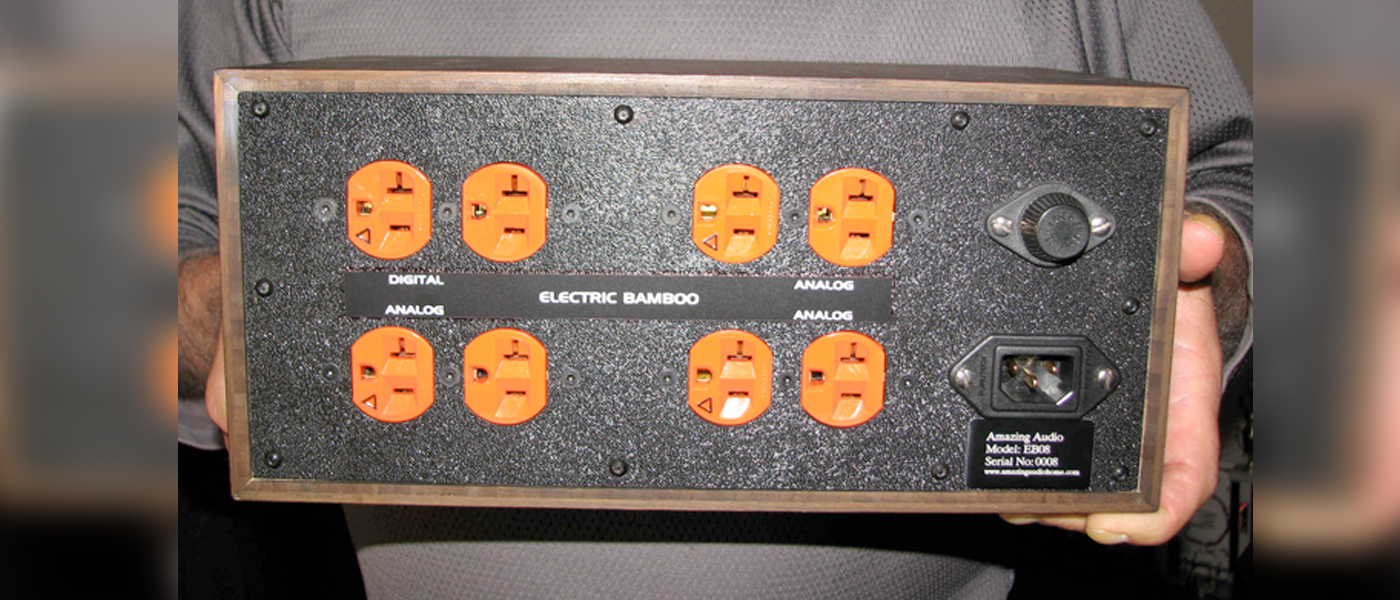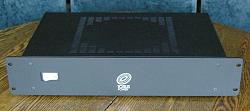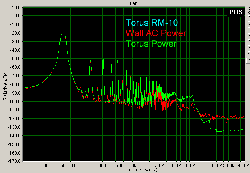Introduction
I have had this product in my lab for several months without writing the review. I stressed it over and over, wanting to see if something untoward would pop up. It never did. And, it was just so darned useful, I just kept it in the system.
Well, it is time to write the review. It worked perfectly all that time, and I just have nothing bad to say about it.
I am referring to the Torus RM-10 Power Conditioner.
Specifications
- Design: Toroidal Transformer-Based Power Conditioner with Surge Protection
- Maximum Output: 10 Amperes Continuous
- Dimensions: 3.8″ H x 19″ W x 10.9″ D
- Weight: 36 Pounds
- MSRP: $1,800 USA
- Torus Power
The Design
The RM-10 is a 10 ampere toroidal isolation transformer, with several associated supplemental circuits attached, in a chassis with eight receptacles on the rear panel. The idea is that your components that are connected to the RM-10 are electrically isolated from the incoming AC supply from the wall. This allows the output impedance to be very low, and so maximum power can be delivered to your components. One of the main features of the Torus line is the ability to deliver peak demands for short periods of time (transients) without letting the voltage sag (the transformer itself is a storage device).
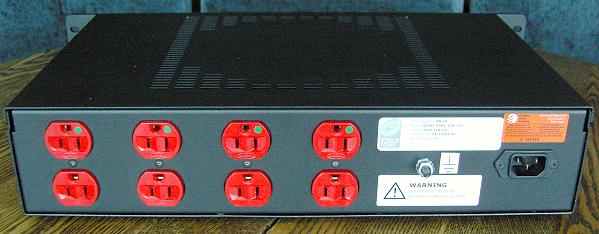
The models come in numerous sizes, such as RM-2.5, RM-5, and RM-10 shown below, with the numbers designating the output in amperes. RM-15’s and higher are available in balanced configuration. The largest one is the RM-100 ($8,500), which will deliver 100 amperes at 120 volts. (Torus will make you an RM-200 on special order.)
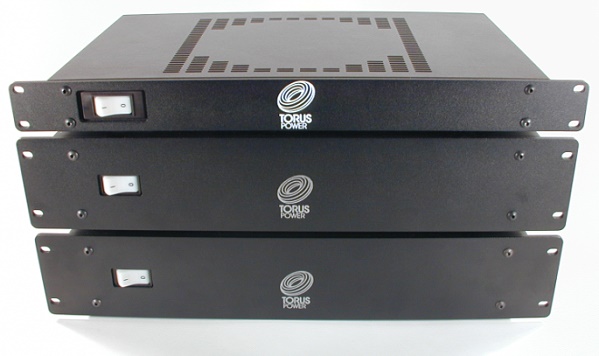
Torus designed the products with very low output impedance (0.2 ohms in the RM-10, 0.02 ohms in the RM-100), and they employ Series Mode Surge Protection circuits which do not shunt voltage surges to ground like MOVs do (MOVs are the usual surge protection device in power conditioners). The toroidal transformer is a low noise design and utilizes Plitron “NBT” (Narrow Bandwidth Technology) to attenuate differential and common-mode noise without external circuits or components.
Here is a photo of the inside of a Torus chassis (RM-100).
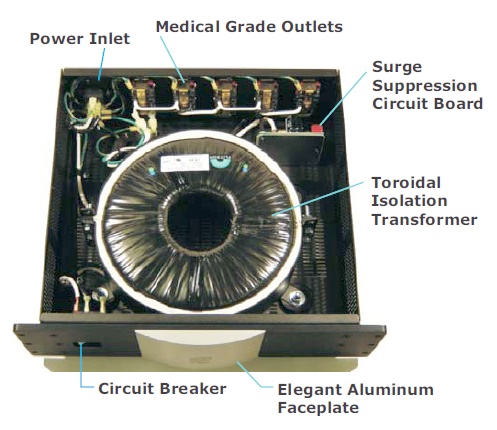
In Use
I utilized the RM-10 with several digital projectors. The 10 ampere RM-10 is perfect for this because some of the projectors need several hundred watts of power. I also put my digital sources (DVD players and CD players) in the circuit.
Shown below is the noise spectrum from the RM-10. First, I measured the noise direct from the wall AC socket (red graph line), then measured it from one of the output receptacles on the RM-10 (green graph line). I equalized the output peak at 60 Hz for both graphs. Notice that noise is about the same in the audible band, except for 3 kHz – 12 kHz, and then the noise floor drops about 15 dB in the out of band range up to our limit of 96 kHz. THD+N was essentially the same for the wall AC and Torus AC (4.5%). The reduction of high frequency noise (assuming this lowered noise floor continues into the MHz range) is very important for two reasons. One is that high frequencies can “beat” with frequencies in the audible band, producing distortion. Secondly, digital audio sources (DVD and CD players) as well as digital projectors work with signals in the MHz range, so reducing noise in this area can improve performance. I did not hear or see any differences that were obvious, but it is certain that reduced high frequency noise can do nothing but good for the audio and video. Perhaps if I had been able to A/B them quickly, rather than having to turn off the projector, unplug it from the wall AC, plug it into the Torus, and turn the projector on again, I would have been able to detect small improvements.
The wall AC measured 120 volts on the hot leg, and about 1 volt on the neutral leg (against ground), and the AC output from the RM-10 measured 124 volts on the hot leg and less than 0.1 volt on neutral.
I never had any problems with the RM-10. It just kept working and working, and made no mechanical noises of its own (sometimes toroidal transformers will hum loudly).
Conclusions
Torus Power makes as wide an array of isolation transformers as I have ever encountered. The 100 amp version (RM-100) would be a great addition for supplying isolated AC to an entire home theater in custom install situations, but a small one like the RM-10 is useful especially for digital sources and projectors, the total power of which does not exceed 10 amperes.


